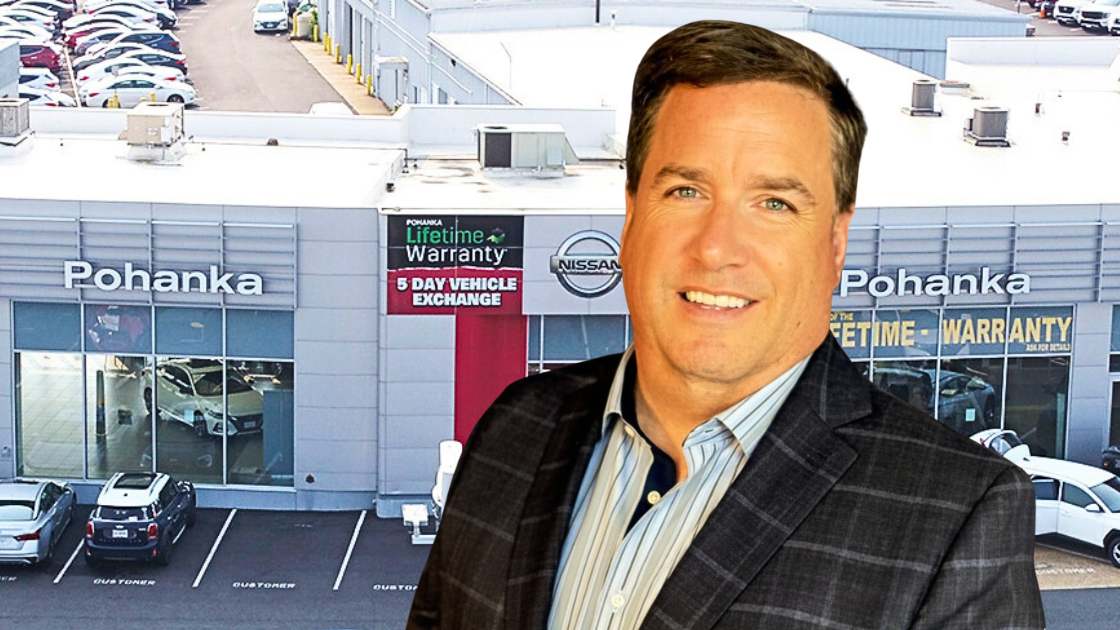
Jeff Ramsey, CMO at Ourisman Cars
Yesterday, Jeff Ramsey, CMO of Ourisman Automotive Group, joined Daily Dealer Live to break down his team’s marketing strategy—and how they’ve dropped ad cost per sale by $100/unit while unlocking more than $2.5 million in added profit.
No fluff. No secret lever. Just structure, and a ruthless focus on what actually moves the needle.
For context: Ramsey oversees marketing for 18 rooftops across Virginia, Maryland, and Delaware.
So how’d they cut about $100 per unit from ad spend?
First: They scrapped percentage-based ad fees.
Ramsey now insists on flat, capped costs, so vendor compensation doesn’t automatically grow with the budget.
That way, everyone stays aligned: vendors earn based on results, not just spend.
His take: “If we’re spending $10,000 a month on paid search and they say, ‘Hey, we need to spend $15,000,’ well, they just got a $1,000 raise. I just can’t make sense of that.”
Second play: Ditch the one-size-fits-all vendor model.
His team tracks performance store by store, then leans into what converts in each market.
Case in point: CarGurus performs well across much of the group, but in Delaware, Cars.com wins.
And it’s not about liking one vendor over another. It’s about knowing what works where and adjusting before you waste pennies.
Third move: Keep ad strategy in sync with inventory, especially inbound and aging units. Not to micromanage, but to stay laser-focused on what’s actually on the lot.
Take Volkswagen, for example:
His group’s VW new-car inventory is down about 65% since January. Without tracking that drop in real time, they’d still be promoting models they can’t deliver. Not a good look.
He also noted that Hondas, Subarus, and Toyotas often close quick and cheap, usually under $100 in ad spend per sale.
Meanwhile, Stellantis 4x4s, especially Dodge Hornets, take more work and more budget to move.
Big picture: Ramsey’s maintaining a marketing system that mirrors how dealers actually sell cars today: one store, one market, one model at a time. And maybe that’s the move. Less chasing averages, more dialing in what really converts in your backyard.
Outsmart the Car Market in 5 Minutes a Week
No-BS insights, built for car dealers. Free, fast, and trusted by 95,000+ auto pros.
Subscribe now — it’s free.
Courtesy transportation is no longer a nice-to-have.
It’s a need-to-have.
That’s why 80% of dealership respondents agree that providing courtesy rides with Uber has helped retain customers, based on Uber’s survey of 79 organizations in 2023.
With Central, you can request an Uber ride on behalf of your customers, even if they don’t have the Uber app. Car dealerships love using Uber because it’s a simple way to offer white-glove customer service, supplement loaner cars or shuttles, and manage parts pickup and delivery.
Dealers can request one-way or round-trip rides, add multiple riders and locations, set spend caps, and even monitor trips in real time.
Plus, you'll get monthly reports to keep track of everything.
If you’re ready to reduce the costs associated with maintaining shuttles and limit the liability of loaner vehicles, it's time to partner with Uber for Business.
Visit t.uber.com/CDGauto today to learn more.











